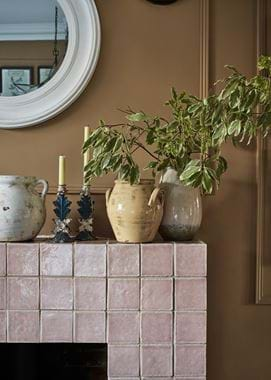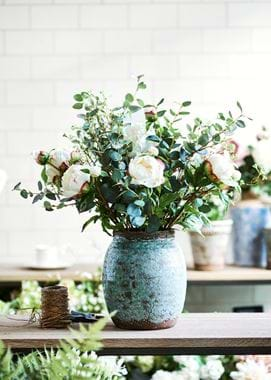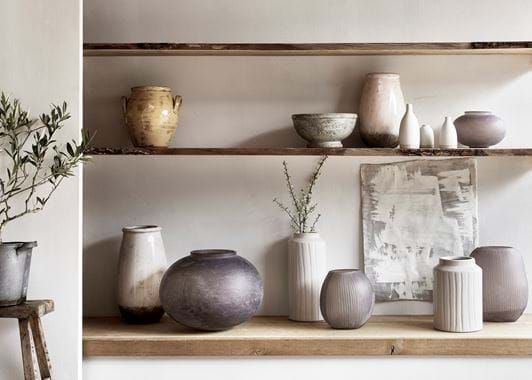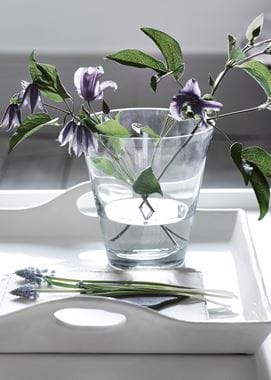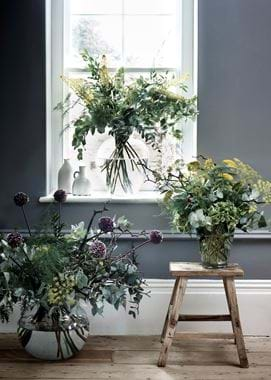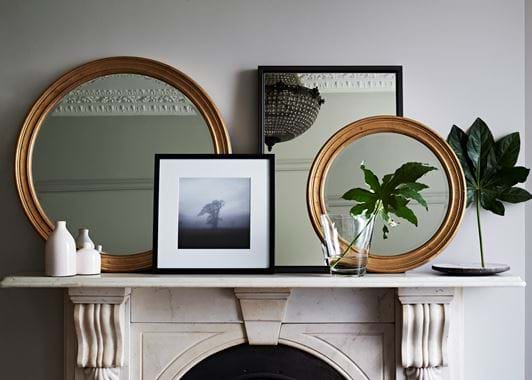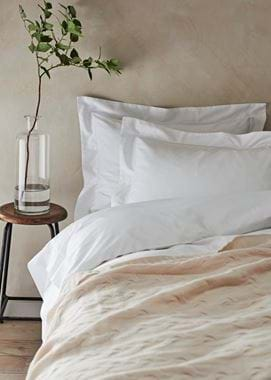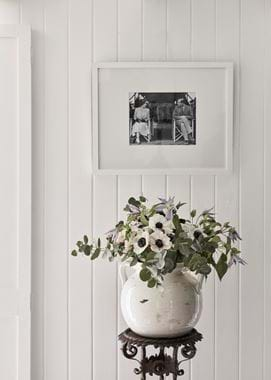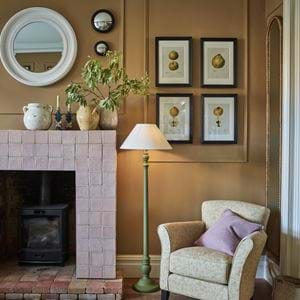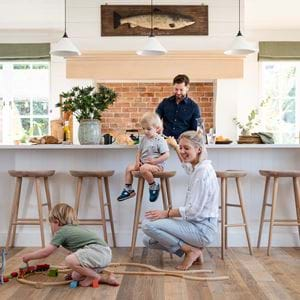Flower school: ways with our vases
Flower school: ways with our vases
When you’re just starting out or dabbling with flower arranging, the wealth of vases (not to mention pots and jugs) out there can make the whole thing seem a little daunting. Which ones should you include in your collection? And what will look best arranged inside? How about if you’ve given it a go already, but you’ve ended up with a stiff and formal-looking arrangement? Or the opposite: flowers that droop sadly over the edges? Well, we’re here to help bring a little clarity to the situation. Read on for our guide to the four main types of vase in our collection (and everywhere, really), what to arrange inside them, and how to avoid some of the pitfalls that might crop up.
Bud vases
Being so small, bud vases (like Ella, Castleford and Corinium) are by far the simplest way to bring flowers and greenery into your home. All it takes is a little snip or three (odd numbers look best) of something delicate and you have a sweet little arrangement in next to no time.
Some of our favourite stems for filling your bud vase include sweet peas, ornamental grasses, seed heads, herb sprigs, nasturtiums or even a tendril of wild strawberry. You could also cut small sections off one of our larger life-like stems – corn parsley, scabiosa and apple blossom would all be perfect, as would the buds from the roses.
You can then simply place your filled bud vase on its own in some small spot (why not create a hand-tied posy of fragrant herbs and wild flowers and sit it beside your bed where it’ll greet you with its scent each morning?) or use several together to create a large arrangement. One of our favourite tricks is to place a handful of bud vases on a dining table as ‘satellites’ to the main vase, keeping a few small pieces from the central arrangement back to echo in its littler companions.
Narrow-necked vases
Though seemingly sitting at opposite ends of the scale – with slim, tall bottles at one end and wide, round vases at the other – these types of vessels have one important thing in common: their opening is slimmer than their body. With vases like these, there’s one main rule of thumb to bear in mind: the wider the body, the more you can fit in.
Skinny-bodied and narrow-necked bottle vases (the Castlefords are the obvious example here, but Beswick and Whitton both fit into this category too) can be especially tricky to arrange in – if you’re not careful, you’ll end up with a very upright, tightly-bunched and rigid bundle of flowers. Not overfilling your vase is the simplest solution to that. We think that they look best with just one or two tall stems inside. Choose architectural, statement pieces, ideally with a bit of bend so they don’t just stick straight up, like a eucalyptus stem or a very stately delphinium flower. In fact, where these vases really come into their own is when you have a tall stem or branch that, in a wider-necked vase, would simply topple out.
Fatter-bodied but still narrow-necked vases (like Alconbury and Whitton, and the shorter version of Ellingham) on the other hand, give you more room to play with because you can angle the stems inside the vase so they splay out to the sides. Just as your approach with the bottles was to continue the tall and slim theme through to your arrangement, the same principle goes for these vases: whatever stems you use inside, just make sure that the final arrangement balances the width of the vessel. Traditional hand-tied bouquets, where the stems are all gathered tightly in the hand with the ends and tops splaying out generously, are perfect. These vases can also look great with just one or two statement stems too though, especially when, like Alconbury, they have an interesting texture or design themselves.
And if you’re thinking of creating a terrarium inside a vase? Look no further than the round Charlton – the perfect fish-bowl-like container for a carefully-arranged collection of succulents. Maybe skip the boat in a Castleford bottle though.
Pinched-neck vases
Arguably, these are the easiest type of vase to arrange into (except bud vases, of course). They’re characterised by a body and an opening that are roughly the same size (which is where they differ from the wide-bodied, narrow-opening vases we’ve just discussed), but with a pinch to the neck that creates an almost hourglass shape. And it’s that pinch that is the florist’s best friend because it effortlessly gathers in the flowers, encouraging them to splay out in just the right way. The Ella vases are prime examples, although Kennington, Newington and the Corinium jug vases all function in a similar way. Whereas the hand-tied bouquet works best with the round vases, it’s a more looser, wilder arrangement that is the perfect match here – think generous armfuls of roses and wildflowers, snips from blossoming branches and tumbling sweet peas picked straight from the garden. The shape of these vases will allow them to feel free and relaxed, while still keeping them in place.
Wide-necked vases
Probably the most defining characteristic of hurricane vases is that they have wide openings so you can easily place candles inside. And, naturally, the same goes for a pot, except it’s normally home to a plant. So, when you’re using these vessels for flower arranging, you just need to take that into account and know that whatever you place inside will be able to splay and flop to its heart’s content. The Kennington and Newington hurricanes have a little help from their slightly pinched necks – as we’ve just seen – but others that grow gradually wider towards the top, like Alderney and the glazed herb pots, or that are straight from top to bottom (Neve and Broseley) need to be approached with a laidback frame of mind. If you’re really struggling, place a ball of chicken wire in the bottom (this really only works with the ceramic pots) or a flower frog (these look a bit like pin cushions) into which you can thread and skewer your stems to hold them in place. Otherwise, go for either a very generous bunch that really fills the vase (so you don’t get a gap in the middle) or a single bold stem. Or, embrace the flop with tulips that’ll bend gracefully over the edges.
You can explore our entire vase collection – as well as our plant pots and ornamental containers – online or in the flower shops inside any of our stores.

